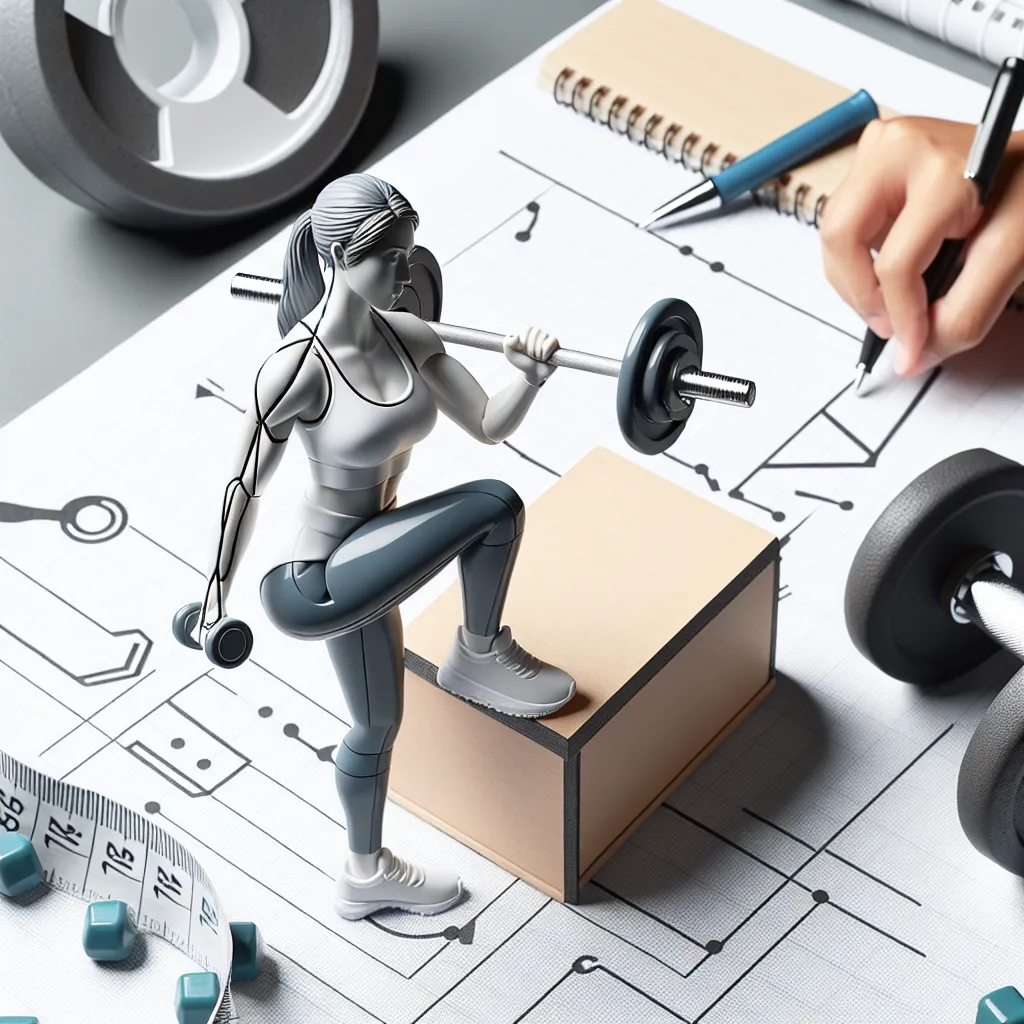Targeted Workouts for Muscular Imbalance
When it comes to achieving balanced muscle development, targeted workouts for muscular imbalance play a crucial role. Many individuals face muscular imbalances, which can lead to poor posture, compromised movement patterns, and an increased risk of injury. By incorporating specific exercises that target weaker muscle groups, individuals can work towards achieving a more balanced, symmetrical physique.
Targeted workouts for muscular imbalance involve identifying areas of weakness and tailoring exercises to address these specific issues. For example, if an individual has a weaker left quadriceps compared to the right, incorporating single-leg exercises such as lunges or step-ups can help address this imbalance. Similarly, focusing on unilateral exercises for the upper body, such as single-arm rows or presses, can help correct imbalances in the shoulders, chest, and arms.
In addition to targeting specific muscle groups, incorporating unilateral exercises can also help improve overall stability and balance. By working each side of the body independently, individuals can identify and correct any strength discrepancies between the left and right sides, ultimately fostering more balanced muscular development.
It’s important to note that incorporating targeted workouts for muscular imbalance should be done in conjunction with an overall balanced workout routine. While addressing specific weaknesses is crucial, it’s essential to continue working on strengthening the entire body to prevent the development of new imbalances.
By tailoring workouts to address individual muscle development, individuals can work towards achieving a more balanced, symmetrical physique while minimizing the risk of injury and improving overall functional movement patterns.
Customizing Your Fitness Routine for Muscle Growth
When it comes to maximizing muscle growth, customizing your fitness routine to target specific muscles is essential for achieving the best results. Tailoring your workout to focus on individual muscle development allows you to address any imbalances and weaknesses while emphasizing the areas you want to enhance.
Customizing your fitness routine begins with identifying your specific goals. Whether you aim to increase the size of your biceps, build a stronger core, or sculpt your legs, it’s crucial to design a workout plan that aligns with your objectives. Understanding the anatomy and function of the muscles you want to target will aid in selecting the most effective exercises.
Integrating specific exercises that isolate the desired muscle groups is key to customizing your routine for muscle growth. For example, if you want to focus on your chest muscles, incorporating exercises like chest presses, flyes, and push-ups can effectively target and stimulate muscle growth in that area. Similarly, if developing stronger leg muscles is your goal, exercises such as squats, lunges, and leg presses should be prioritized.
Furthermore, paying attention to the number of sets and repetitions, as well as the intensity of your workouts, is crucial for customizing your routine to promote muscle growth. Manipulating these variables can help create the ideal environment for muscle hypertrophy, ensuring that your training is optimized for the best results.
In addition to exercise selection, proper nutrition and adequate rest are integral components of customizing your fitness routine for muscle growth. Consuming sufficient protein, carbohydrates, and healthy fats, along with staying hydrated, supports muscle repair and growth. Furthermore, allowing for adequate rest and recovery between workouts is vital for optimizing muscle development.
In conclusion, customizing your fitness routine to target individual muscle development is fundamental for achieving optimal results. By tailoring your workout to focus on specific muscle groups, integrating appropriate exercises, and paying attention to essential factors such as sets, repetitions, intensity, nutrition, and rest, you can effectively promote muscle growth and achieve your desired fitness goals.
The Science of Isolated Muscle Training
When it comes to muscle development, understanding the science of isolated muscle training is crucial for tailoring your workout to target specific muscles effectively. Isolated muscle training involves performing exercises that focus on one particular muscle group, allowing for precise and targeted development. This approach is especially beneficial for individuals looking to address muscle imbalances or specific weaknesses.
The key to isolated muscle training lies in understanding the anatomy and function of the muscle you aim to target. By selecting exercises that isolate the desired muscle, you can optimize its development while minimizing the involvement of surrounding muscles. This targeted approach can be achieved through movements that create tension and resistance specifically within the muscle of interest.
Furthermore, incorporating specific exercises into your workout routine can contribute to well-rounded muscle development. For example, targeting the triceps with exercises such as tricep extensions or the biceps with concentration curls can lead to more balanced and proportionate muscle growth. Understanding the science behind isolated muscle training empowers individuals to tailor their workouts according to their unique development needs, ultimately leading to more effective and efficient results.
In conclusion, the science of isolated muscle training provides a strategic approach to individual muscle development. By honing in on specific muscle groups and understanding the mechanics of targeted exercises, individuals can customize their workouts to address specific areas of improvement. This targeted approach not only enhances muscle development but also contributes to overall balance and symmetry in physique.
Optimizing Exercise Selection for Muscle Symmetry
When aiming for balanced muscle development, it’s crucial to optimize exercise selection to ensure muscle symmetry. Tailoring your workout to address individual muscle groups can significantly impact the overall aesthetic and functional aspects of your physique. One effective approach is to focus on specific exercises that target each muscle group with precision, addressing any existing asymmetries. By incorporating exercises that emphasize unilateral movements, such as single-leg lunges, dumbbell rows, and unilateral leg presses, you can address strength and size imbalances between the left and right sides of the body. Additionally, varying the grip width, stance, or range of motion in exercises like bench presses, squats, and pull-ups can further promote balanced muscle development. This targeted approach allows for addressing specific weaknesses and imbalances, leading to improved muscle symmetry and overall aesthetic appeal.

